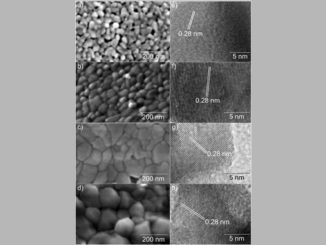
Writers: Aline Satie Takamiya and Douglas Roberto Monteiro and Daniel Galera Bernabé and Luiz Fernando Gorup and Emerson Rodrigues Camargo and João Eduardo Gomes-Filho and Sandra Helena Penha Oliveira and Debora Barros Barbosa
Keywords: Biocompatibility; endodontic materials; inflammation; silver nanoparticles; toxicity
Abstract
Introduction
Silver nanoparticles have been used for different purposes in dentistry, including endodontic treatments. The aim of this study was to determine the cytotoxicity of different types of silver nanoparticles on mouse fibroblast cell line L929 and the reaction of subcutaneous connective tissue of Wistar rats to these nanoparticles.
Methods
Silver nanoparticles of an average size of 5 nm were synthesized with ammonia (SNA) or polyvinylpyrrolidone (SNP). L929 was exposed to SNA and SNP (0.1–100 μg/mL), and 3-(4,5-dimethylthiazol-2-yl)-2,5-diphenyltetrazolium bromide and enzyme-linked immunosorbent assays were performed after 6, 24, and 48 hours. Culture medium was used as the control. Sixteen rats received, individually, 3 polyethylene tubes filled with a fibrin sponge embedded in 100 μL SNA or SNP (1 μg/mL). A fibrin sponge with no embedding was the control. Tissue reaction was performed qualitatively and quantitatively after 7, 15, 30, and 90 days of implantation in the dorsal connective tissue of Wistar rats.
Results
SNA and SNP were cytotoxic to L929 in higher concentrations, with SNA significantly more toxic than SNP. SNA and SNP did not induce significant interleukin-1β and interleukin-6 production. The release of stem cell factor by L929 increased 48 hours after the treatment with SNP at 5 μg/mL. Histologic examination showed that the inflammatory responses caused by SNA and SNP at 1 μg/mL were similar to the control in all experimental periods.
Conclusions
It was concluded that SNA and SNP were not cytotoxic at 25 μg/mL or lower concentrations. However, for safe clinical use, further studies establishing others points of its toxicologic profile are recommended.




